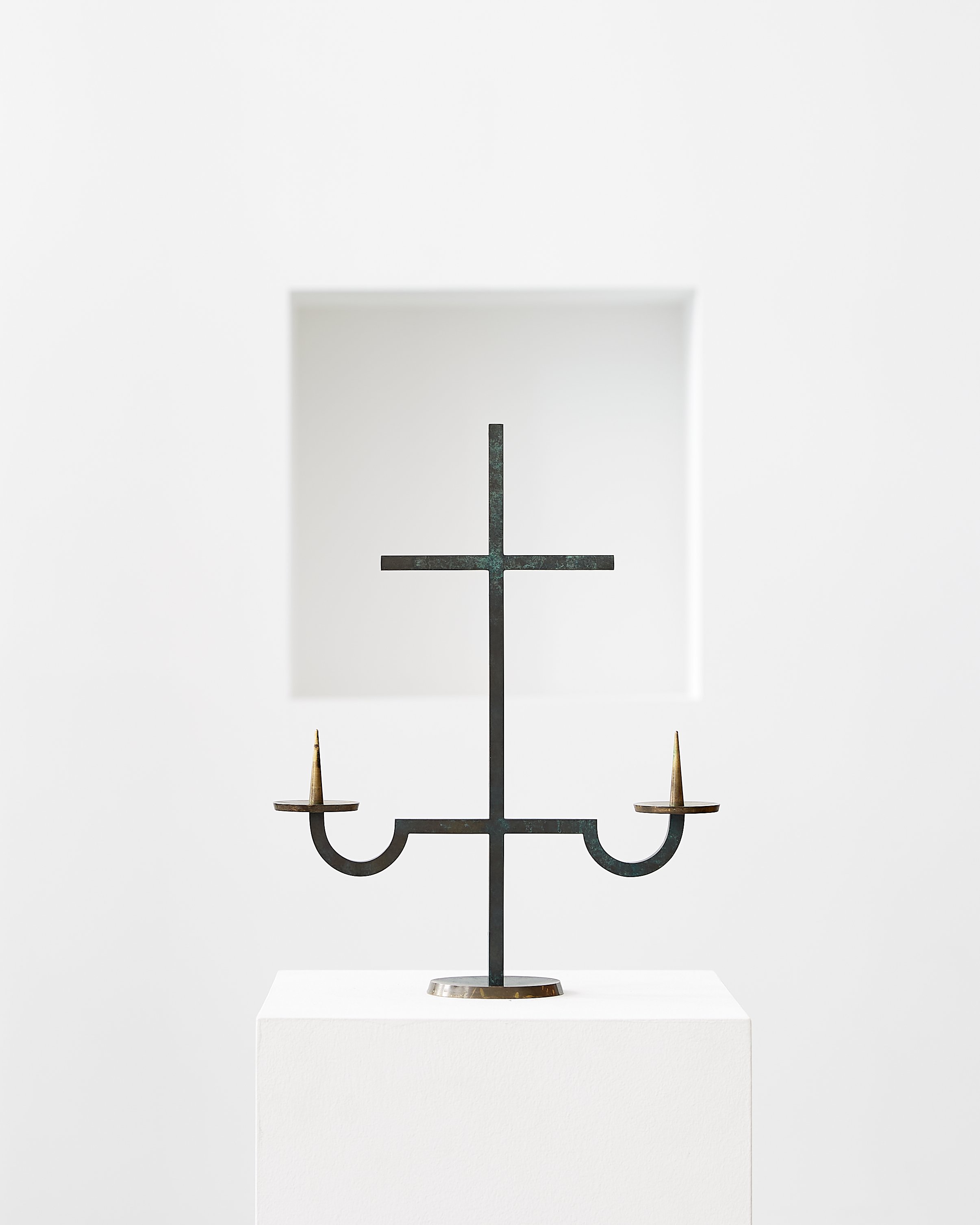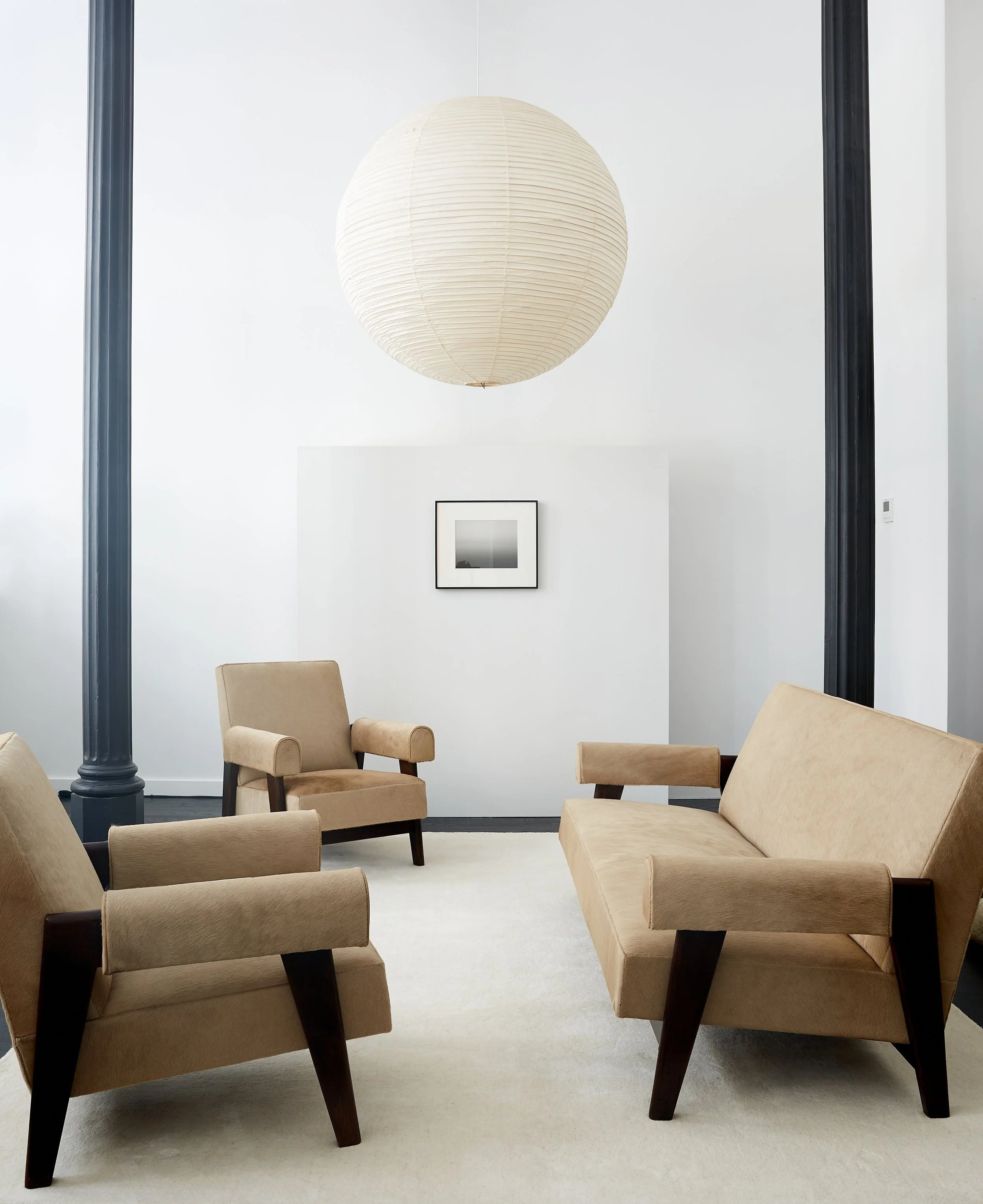Dom Hans van der Laan Solid Bronze Candlestick c. 1960s






Dom Hans van der Laan Solid Bronze Candlestick c. 1960s
SOLD.
Dom Hans van der Laan solid bronze candlestick.
Amstelveen Chapel, The Netherlands c. 1960s.
Dom Hans van der Laan believed in the totality of design in the spaces he created and attributed just as much importance to the design of individual objects. He had a hand in every single detail present in his buildings: furniture, linens, bible covers, plaques, tiles, new families of fonts for stone encryptions, even monastic robes. Most of his altar ware and candleholders were made by Utrecht gold and silversmith, Jan Noyons (1918 - 1982), in accordance with designs van der Laan.
Noyons was one of the most important gold and silversmiths of post war Holland. Not a passionate form innovator but extremely precise about the finishing of items, he practiced the craft in the way it had already been carried out for centuries, as an artisan. Most often Noyons was no more than the executor of van der Laan’s ideas, although they always discussed the designs together beforehand and in some cases also reached agreement about adjustments to the form of the design. Small items like this designed by van der Laan are extremely rare, the reason being that most churches regarded them as too sacrosanct to sell.
Literature:
Pp. 105 - 111, The Willibrordkerk Almelo: The Legacy of. Dom. Hans van der Laan, Jan de Jong and Théodore Stravinsky, Hans Holtmann, Amsterdam, 2004. Similar examples p. 30.
Dom Hans van der Laan: Tomelilla, Caroline Voet, Architectura & Natura, 2016. Similar examples pp. 229 - 230.
Dimensions: 11.5” width, 3.5” depth, 14.75” height
About Dom Hans van der Laan (1904 - 1991):
Dutch Benedictine monk, architect, and leading figure of the Bossche School, Dom Hans van der Laan developed a new vision for architecture from within the confines of the monastery, completely uninfluenced by discussions in the world of architecture and design.
Not perceiving the golden ratio to be relevant to the field, van der Laan developed a theory of the ‘plastic number’, which he developed over decades by methodically studying the rhythms, rules and proportions found in nature. The mathematics of beauty.
Approached from a philosophical, theological and technological perspective, his architecture and furniture examines the primeval origin of architectural principles and the fundamental essence of the form. On both a theoretical and practical level, van der Laan sought to give significance and importance to simplicity. A voice to silence, a form to the void.
If van der Laan’s innovative work is characterized by an all embracing simplicity, numbers are the only decoration present. These numbers govern all formal choices and establish a relationship between the parts but, once used, disappear without a trace, leaving only the invisible harmony that permeates.
Additional information on the work of Dom Hans van der Laan can be found here.
Shipping + Delivery: Shipping costs are not included in the sale price as they vary greatly depending on location. Please contact us for shipping or delivery costs. Local (NY) delivery and pick-up is available, we also ship nationwide and worldwide. We work to obtain the most affordable shipping rates possible while ensuring that pieces are delivered safely.



